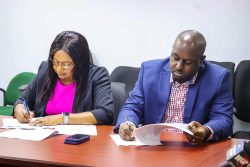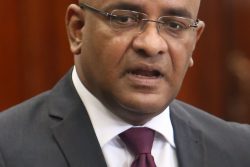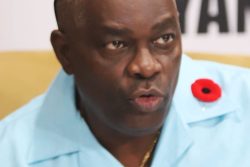Dear Editor,
The construction of the Barbados Deep Water Port, completed in 1961, was financed with the proceeds of a loan of 23 million Eastern Caribbean dollars raised on the London market. That single borrowing added the equivalent of ten percent of GDP to the Barbados national debt. It is an example of good debt, an investment which continues to provide utility decades after the money has been fully repaid. The Barbados economy has been transformed; the port’s bulk storage facility for sugar stands empty, and the gantry cranes which poured golden crystals directly into the holds of waiting cargo ships are a forlorn reminder of the days when sugar was king. But the breakwater and the berths of the sheltered harbour have been repurposed, and now welcome tourists disembarking for tours of the island and to enjoy its storied beaches.
Borrowing for investment in roads, ports, airports and transport infrastructure that enables economic activity for many years to come is good investment. So is borrowing for physical investment in educational and health facilities and equipment, and for similar investment for the maintenance of law and order. Borrowing to extend and upgrade water distribution, electricity and telecommunications, sewerage and waste management facilities and equipment also falls into the category of good debt.
It is rather more difficult to justify government borrowing for investment in new hotels and export activity, even though these may also be examples of good debt. Such investment is high priority because it increases the capacity of Caribbean economies to earn the foreign currency they need for their development. However, in order to succeed the projects must be carefully designed, constructed and staffed, to ensure that they offer good value for money to potential visitors, and produce goods which will attract customers from abroad. Governments everywhere in the Caribbean have repeatedly proved inept in these aspects. Moreover, provided the machinery of government works tolerably well, there is usually no shortage of private investors, domestic and foreign, willing to make investment in hotels and other projects which will yield competitive returns.
In contrast to debt that provides lasting developmental value, the funds that Caribbean governments have raised by issues of government bonds in markets in New York, London and elsewhere since the 1980s has left nothing tangible that still yields value. The prospectuses that were published when new bonds were issued typically listed several projects on which the money was to be spent, but the full amount of the issue was always solicited up front, with no conditions tied to the execution of any of the projects listed. Whatever their justification at the time of issue, and whatever the intention for their use, this borrowing must all be considered bad debt, in retrospect.
Over the last four decades, much, though not all, of the borrowing by Caribbean countries from multilateral institutions has moved from the category of debt that produces lasting value to debt that does not. Up until the late 1980s the World Bank, the Inter-American Development Bank, the Caribbean Development Bank and other lenders offered only loans for specific projects, with disbursements tied to progress with the implementation of these projects. This is still the case with much of their lending. However, in the early 1990s, many multilateral development institutions introduced “policy loans”, with disbursements linked, not to tangible capital expenditure, but to the implementation of new policies and strategies. The intention was laudable, but the results have been disappointing. In a few cases, the conditions set down in the loan agreements have not been met, and the programmes were terminated prematurely. That turns out to have been a good thing, because in all the cases where policy loans have been fully dispersed, is difficult to identify any improvement in economic performance that can be attributed to the use of policy loan funds. These borrowings cannot be considered good debt.
Around the same time that the World Bank and others introduced policy loans, the International Monetary Fund introduced the Extended Fund Facility, to be followed over time by a number of new instruments. Up until the late 1980s the International Monetary Fund’s lending was for short term assistance to countries facing an unexpected shortage of foreign currency. To ease the pain of a sudden cut-back in imports as a result, the Fund would provide a three-year loan of foreign currency. During that time the affected country could make adjustments to the new circumstances, so they would be in a position to begin to repay this Standby Facility, as it was called.
The Extended Fund Facility, as its name implies, was disbursed over a somewhat longer period, usually four years. Just like the new lending by the development banks around the same time, the conditions for disbursement had to do with the design and implementation of economic policy changes. Just as with policy loans from the development banks, it is difficult to identify positive outcomes.
I believe the time is ripe for a re-evaluation of borrowing strategies by Carib-bean governments. Clearly, government borrowing to provide for facilities and equipment to ensure the effective delivery of public services and public utilities is essential for economic development. On the evidence, that seems as far as government needs to go. Government borrowing for infrastructure, public utilities and public services is good debt. All other borrowing, except for temporary accommodation under an IMF standby facility, is not.
Yours faithfully,
DeLisle Worrell





